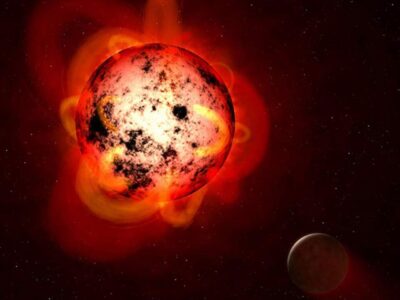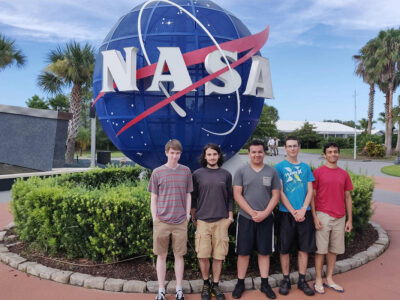We all know that it takes the Earth 365 days to circumvent the Sun, marking an entire time. In our solar system, a time on other globes varies greatly depending on how close they’re to our star. Mercury, which is both the lowest earth and the closest earth to the sun, takes 88 days to circumvent the star. By comparison, dwarf earth Pluto takes 248 times to route the Sun. MIT astronomers have discovered an exoplanet described as an ultrahot Jupiter that orbits much more snappily and much near to its host star than Mercury.
While Mercury orbits the Sun at a distance of35.98 million country miles, the exoplanet MIT scientists have discovered orbits only1.5 million country miles down from its host star. Due to its propinquity to the star, a time on the earth is only 16 hours long. Its blistering fast route makes gives it the shortest route of any given gas mammoth The recently discovered ultrahot Jupiter is five times the mass of Jupiter. Since the earth is so close to its star, its dayside is estimated to have a temperature of 3500 kelvin, which is close to 6000 degrees Fahrenheit. That incredibly high temperature makes the earth, designated TOI-2109b, roughly as hot as a small star. The inconceivable face temperature of TOI-2109b makes it the alternate hottest exoplanet ever detected. By comparison, the hottest exoplanet discovered is an ultrahot Jupiter called KELT-9b, with a face temperature estimated to be about 7800 degrees Fahrenheit.
Astronomers believe TOI-2109b is going through a process of orbital decay which will ultimately see the earth consumed by its host star. As it gets near to its star, its speed will increase, syncopating the length of a time on the earth. TOI-2109b was discovered using the NASA Transiting Exoplanet Survey Satellite (TESS), furnishing astronomers a chance to study how a earth going through orbital decay behaves as it’s drawn towards the star.
The lead author of the paper on the discovery, Ian Wong, says if scientists are lucky in one or two times, they will descry how the earth is moving near to its star. As for how long it’ll take ahead TOI-2109b is consumed by its star, it wo n’t be in our continuance. Wong believes the earth may vanish in another 10 million times Astronomers began observing the host star, TOI-2109, using TESS on May 13, 2020. The star is located in the southern portion of the constellation Hercules. It lies about 855 light- times from Earth. TESS has been busy discovering stars that may have globes ringing them, and TOI-2109 was the 2109th TESS Object of Interest, which is where its name is deduced. The exoplanet was discovered using changes in the light of the star called transportations. That fashion is generally used to discover exoplanets ringing distant stars.
During a conveyance, starlight from the host star dims compactly as a earth passes in front. Using TESS data, the astronomers determined TOI-2109b orbits its host star every 16 hours. After determining a earth was ringing the star, the TESS platoon advised the astronomical community, and multiple ground- grounded telescopes conducted follow-up compliances over the ensuing time. The combined compliances verified the conveyance was caused by a earth ringing the star With a mass of five times that of Jupiter, TOI-2109b would be roughly 35 percent larger than Jupiter. The star it orbits is roughly 50 percent larger in size and mass than the Sun. Estimates suggest TOI-2109b is falling into its host star at a rate of 10 to 750 milliseconds per time. Compliances also suggest the earth is tidally locked, with one side facing its host star constantly.
While estimates suggest the earth’s dayside is 3500 Kelvin, the nightside has a brilliance below the perceptivity of TESS data. That’s an intriguing observation raising a riddle about what’s being on the earth’s night side. The data suggests that conceivably the temperature on the night side of the earth is veritably cold. Still, there’s the possibility that the earth has processes in place that ever takes heat from the dayside and transfers it to the nightside.
These compliances clearly aren’t the end of compliances for TOI-2109b. Astronomers hope to use more important telescopes, including the Hubble Space Telescope and the James Webb Space Telescope, to conduct more detailed compliances in the future. The thing is to learn about conditions for hot Jupiters as they fall into host stars. Ultrahot Jupiters similar as TOI-2109b are the most extreme class of exoplanet, according to Wong Scientists are only beginning to understand the unique processes passing on globes of this type. Experimenters are so curious about these processes because we’ve no similar processes being in our solar system. One of the introductory understandings of this type of earth scientists hope to discover is how massive globes like Jupiter can circumvent a star in only a many days. Enterprise suggests these globes may have begun their life much further down from their host stars and migrated near to the stars over millions of times. Compliances similar as this will help answer those questions in the future.















![How to solve [pii_email_af9655d452e4f8805ebf] Error?](https://themediahubs.com/wp-content/uploads/2023/02/U9rr3rhWhUvxCSyrdw3r5MZLGTsfOGbJeliDmntx-1-1-400x225.jpg)



![How to solve [pii_email_af9655d452e4f8805ebf] Error?](https://themediahubs.com/wp-content/uploads/2023/02/U9rr3rhWhUvxCSyrdw3r5MZLGTsfOGbJeliDmntx-1-1-180x180.jpg)
Comments